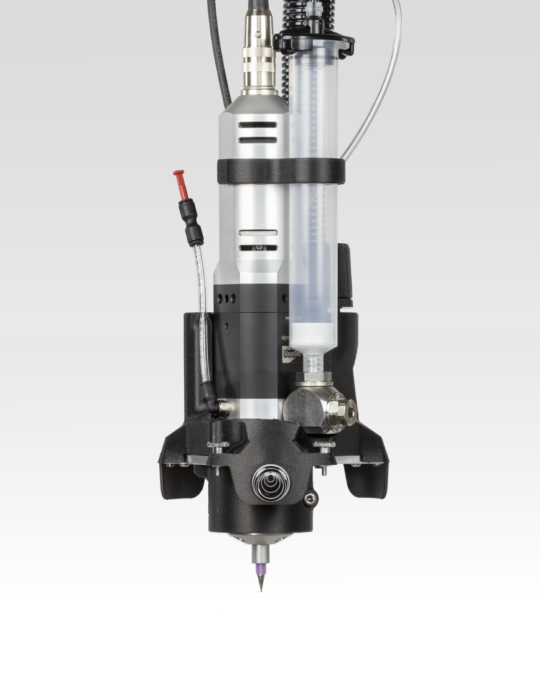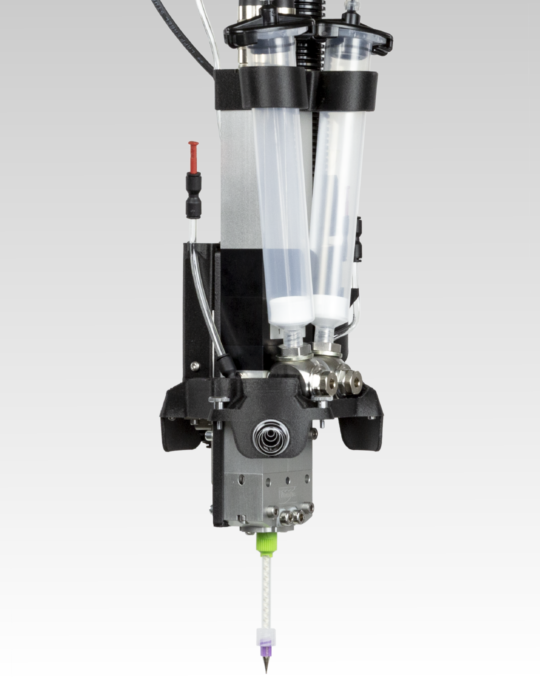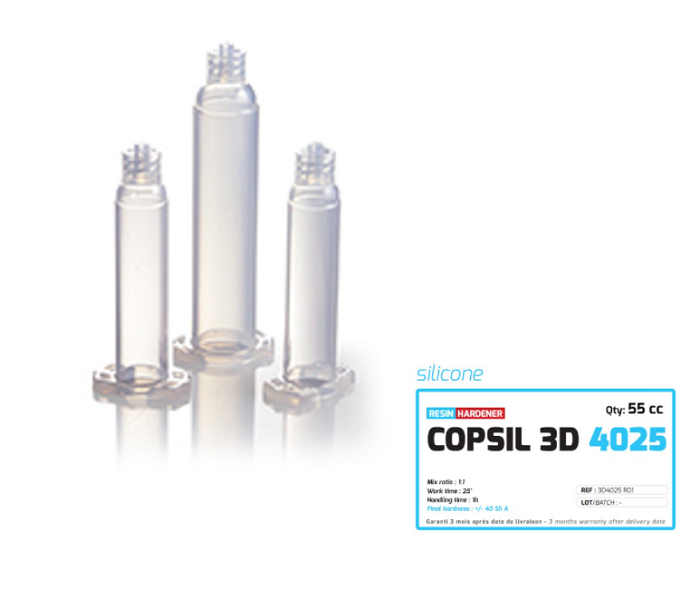Founded in 2016, Lynxter fabricates modular industrial machine tools, as well as 3D printers, as the French company is working to democratize additive manufacturing. Its first 3D printer, the modular S600D, was released two years later, and in 2020 Lynxter partnered up with ViscoTec to print silicone onto textiles. Because of its great chemical and UV ray resistance, silicone can also be used to 3D print prosthetics, and recently, Lynxter decided to work with French silicone manufacturer COP Chimie to make silicone 3D printing available to the healthcare industry, as well as increase its own range of silicone materials that are compatible with its S600D system.
Lynxter’s S600D 3D printer can be fitted with silicone cartridges, which make it possible to deposit fine, precise strings of the material with both the single-component LIQ11 and two-component LIQ21 toolheads. The liquid extrusion LIQ11 toolhead uses an industrial volumetric dosing pump to precisely stack lines and liquid dots of silicone, with a manufacturing volume of Ø390 x 600 mm on the S600D, while the LIQ21 features a volumetric dosing pump as well, but also includes a static mixer for homogenous 3D printing.
- LIQ11 toolhead
- LIQ21 toolhead
Now, Lynxter has announced that the COPSIL 3D silicone material range by COP Chimie has been officially approved for use on its S600D 3D printer. The materials in this family enable the production of soft parts with complicated designs, as well as soft parts manufactured in small series, such as for prototyping purposes.
“The silicone elastomer COPSIL 3D 4025 consists of a two-component system (resin and hardener) which is mixed in equal parts and cross-links at room temperature by a polyaddition reaction with a platinum catalyst,” the COP Chimie website explains.
“Its unique consistency and reactivity simplify the design of parts through 3D printing.”
The COPSIL 3D 4025 line has a hardness of 40 Shore A, and 3D printing in silicone with this material family’s two-component RTV 40 ShA silicone on the S600D has been certified ISO 10993-5 for contact with skin. The two companies 3D printed test tubes on the printer, which successfully underwent cycotoxity testing in order to earn this important certification, which assures users that prolonged use with the material is not dangerous for their skin.
In orthopedics and podiatry, orthopedic insoles are considered pretty necessary, and customized ones can ensure that they will precisely fit a patient’s unique foot shape. As with many custom applications, 3D printing is a great way to manufacture insoles and other orthotics, as it can be used to make complex, made-to-measure products, which often cost more money and take more time to produce when you’re dealing with traditional production processes. Because silicone has such high elasticity, cushioning, and supportive properties, this is a good material for making orthotic insoles, which need to be comfortable but strong enough to support the patient’s body weight.
3D printing with fine strings of silicone, now enabled by Lynxter and COP Chimie, will be very beneficial for healthcare, but most especially the orthotics sector.
COP Chimie and Lynxter worked together to test out their 3D printed silicone orthopedic insoles, so that they can move to the next level and create prototypes with standard modeling techniques out of the two-component COPSIL 3D 4025 RTV 40ShA silicone. The testing will validate the use of 3D printing to create made-to-measure, customized products, and prove that orthopedic insoles can be made more durable, comfortable, and hygienic, and perform even better and more efficiently.
Subscribe to Our Email Newsletter
Stay up-to-date on all the latest news from the 3D printing industry and receive information and offers from third party vendors.
You May Also Like
Nylon 3D Printed Parts Made More Functional with Coatings & Colors
Parts 3D printed from polyamide (PA, Nylon) 12 using powder bed fusion (PBF) are a mainstay in the additive manufacturing (AM) industry. While post-finishing processes have improved the porosity of...
3DPOD Episode 193: Flow and What’s Possible in 3D Printing with Ricky Wildman, University of Nottingham
Ricky Wildman is working on 3D printing pills, but, as Professor of Multiphase Flow and Physics at Nottingham, he does a whole lot more. His research encompasses the characterization of...
3D Printing Webinar and Event Roundup: March 17, 2024
It’s another busy week of webinars and events, including SALMED 2024 and AM Forum in Berlin. Stratasys continues its in-person training and is offering two webinars, ASTM is holding a...
3D Printed Micro Antenna is 15% Smaller and 6X Lighter
Horizon Microtechnologies has achieved success in creating a high-frequency D-Band horn antenna through micro 3D printing. However, this achievement did not rely solely on 3D printing; it involved a combination...
































